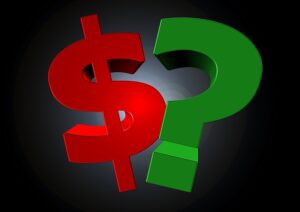<<
Selling a Business Part 1: Preparation
15 May 2023: Selling a Business Part 1: Preparation
Selling a business successfully – that is, not only actually finalizing the sale in a reasonable period of time but also at the highest value – requires planning; a lot of it.
Many professional business brokers experience the “I’ve had it!” call from business owners that, well, have “had it” and want out. If you’re a business owner that decides to sell on the first Monday of fishing season because 40% of the staff called in “sick” that morning, you can be pretty sure that the likelihood of a “successful” sale is between slim and none.
Selling a business takes time – generally between six and 12 months for a properly-priced business. And the most important two words of that sentence are “properly-priced”. In this series of posts we’ll break down the six primary phases of selling a business.
__________________________________________________________________________________
We offer a comprehensive coaching program – both group coaching in our Brokers’ Roundtable℠ community as well as one-on-one coaching – tailored to Realtors, business owners, buyers and anyone interested in valuing, buying or selling a business.
If you’d like to learn more, email me at
jo*@Wo*******************.com
___________________________________________________________________________________
But this series isn’t just for business owners. It’s also for buyers. Buyers have to understand this process if they want to acquire a good business at a fair price and on reasonable terms. Admittedly, the definition of “fair price” and “reasonable” are in the eye of the beholder but the sale or acquisition of a business ain’t for sissies. It’s tough, often complex and occasionally frustrating work. But no matter which side of the table you’re on, remember the old adage that, “If it was easy, everybody’d be doing it.”
 Like any other complex undertaking – such as the D-Day landings, the withdrawal from some Middle East war zone (that ends in “stan”) or even ascending the steps to Air Force 1 – planning is the only way to succeed. And there’s a lot of planning that goes into preparing a business to be sold.
Like any other complex undertaking – such as the D-Day landings, the withdrawal from some Middle East war zone (that ends in “stan”) or even ascending the steps to Air Force 1 – planning is the only way to succeed. And there’s a lot of planning that goes into preparing a business to be sold.
Remember, our objective is success and our definition of success is the best balance of a transaction that is 1) accomplished in a reasonable amount of time; 2) completed at the highest possible valuation, and; 3) consummated with the least oppressive terms.
_____________________________________________________________________________________
Our course, “Learn How to Value and SUCCESSFULLY Sell Businesses“, teaches you how to accurately value and successfully sell businesses.
But first things first.
Selling a Business: How To Prepare It.
For even the smallest business, some level of advice from experienced talent is a basic requirement. Sure, the business owner, flush with self-importance and an unwarranted level of confidence, can try to do this him- or herself but their total lack of experience and know-how is almost guaranteed to result in a transition that doesn’t meet our definition of success. And, as has been occasionally chronicled in this journalistic tour de force, could as easily result in total disaster.
Here are the main components of the preparation stage:
- Clean up – the physical and the financial
- Accurate financial statements
- Knowing what your business is worth
1) “Clean up” refers to both the business’ physical appearance and to its books.
 The former, of course, should require little explanation. After all, what person sporting a three-digit IQ can’t intuit that a business that “looks” attractive will attract more and better suitors than if the joint looks like a junkyard? (Unless, of course, it is a junkyard.)
The former, of course, should require little explanation. After all, what person sporting a three-digit IQ can’t intuit that a business that “looks” attractive will attract more and better suitors than if the joint looks like a junkyard? (Unless, of course, it is a junkyard.)
I mean, think about it. Attractive women and handsome men, as a rule, get more dates than the rest of us. It’s the same for houses, cars, pets and, yes, businesses.
As to the latter, financial “clean up” starts with the goal of delivering financial documents that are clear, clean and easy to understand. Our objective here is to make it easy for the buyer to buy. Start with the balance sheet.
Remove out-dated inventory, equipment that no longer works or used, loans to and from officers/owners, uncollectable receivables and other items that have questionable utility to the business’ revenue – such as the Porsche Carrera the owner’s spouse just had to have.
(The Brokers Roundtable℠, an online community created and hosted by Worldwide Business Brokers, has a live interview with Alex Goss, of Live Oak Bank, the largest SBA lender in the U.S., scheduled for Thursday, 25 May. At the conclusion of that discussion there will be a Q&A during which attendees can get their transaction questions answered by a pro. But you’ve got to be a member to attend. You can sign up for The Brokers Roundtable℠ here.)
Financial clean up also involves consolidating financial statements and tax returns. Buyers will compare the two and they have to bear some resemblance to one another if we want to give the buyer a degree of confidence that the numbers – and everything else we present to them – are reasonably accurate.
2) And speaking of accurate, accurate financial statements are critical from two standpoints. First, from the buyer’s position, is simplicity. We want to make it easy for the buyer to understand the business’ financials because without confusing numbers and the need for constantly trying to explain why that $487,000 in revenue shows up in pieces over three seemingly unrelated categories, it makes it easier for the buyer to buy.
 Some business owners are so obsessive about tracking every dollar that they’ve developed a income and expense statement with dozens and more dozens of different categories including such things as separate “lunch” and “dinner” line items. While such specificity might be helpful as an internal tracking tool, it does nothing but make the buyer’s analysis more complex.
Some business owners are so obsessive about tracking every dollar that they’ve developed a income and expense statement with dozens and more dozens of different categories including such things as separate “lunch” and “dinner” line items. While such specificity might be helpful as an internal tracking tool, it does nothing but make the buyer’s analysis more complex.
But accurate financials will also make it easier for the broker or business appraiser when they begin the valuation process. Financial buyers are buying the adjusted net earnings – basically the answer to the question, “What will this business put in my pocket?” Determining what that number is requires a deep analysis of the profit and loss (income and expense) statement to determine what, if any, expense categories include non-essential items such as attendance at the industry trade fair in Waikiki Beach rather than the one in Cleveland.
This is a process we refer to as “recasting” the earnings in which we try to find “owner benefits” that were expensed to the business; i.e., the benefits of owning that particular business. That’s what a financial buyer is buying and that’s what we have to determine the approximate value of.
3) Knowing what your business is worth is arguably the most important aspect of preparing a business – and its owner – for a sale.
The amount a business owner wants for their business must bear some reasonable relationship to that business’ value. Of the dozens of reasons businesses initially don’t sell, price expectations of the owner is the main one.
 Ask any business owner what the value of their house is and they’ll have a pretty good idea. They can tell you approximately what their car is worth, their boat, any investment property they might own, their stock portfolio and even their collection of rare Michael Jordan playoff-worn sweat socks. But ask them what their business is worth – their most important and valuable asset – and 90% won’t have a clue.
Ask any business owner what the value of their house is and they’ll have a pretty good idea. They can tell you approximately what their car is worth, their boat, any investment property they might own, their stock portfolio and even their collection of rare Michael Jordan playoff-worn sweat socks. But ask them what their business is worth – their most important and valuable asset – and 90% won’t have a clue.
The price expectation – what the owner wants – has got to be related to the business’ value; and that value can be determined within a fairly tight range. A price expectation that significantly exceeds the business value will doom the effort to failure. Equally important (needless to say), an ask price lower than value leaves money on the table – but will certainly improve the chances of a sale, possibly in record time!
The Bottom Line
Preparing a business – and its owner – for a sale is really the foundation on which the rest of the selling process rests. Like the foundation of a house, it has to be built to support the rest of the process; and it has to be built first.
Next week in Part 2, we’ll discuss the listing and marketing of a business; hiring a professional to handle the marketing and sale as well as the basics of that part of the process.
I’d like to hear from you. What topics would you like me to cover? How can we tailor these posts to be more useful to you and your business. Let me know in the comments box, below, or email me at
jo*@Wo*******************.com
.
If you have any questions or comments on this topic – or any topic related to business – I’d like to hear from you. Put them in the comments box below. Start the conversation and I’ll get back to you with answers or my own comments. If I get enough on one topic, I’ll address them in a future post or podcast.
I’ll be back with you again next Monday. In the meantime, I hope you have a safe and profitable week.
Joe
Searching For…
This week we were contacted by a U.S.-based search fund looking for opportunities in B2B services, light manufacturing and specialty distribution with a minimum of $1.5M EBITDA, preferably on the U.S. East Coast.
If any of you know of something that might fit, please let me know.

#business #businessacquisition #sellabusiness #becomeabusinessbroker #businessbrokering #businessvaluation #MergersandAcquisitions #buyabusiness #sellabusiness #realtor #realestateagents
The author is the founder, in 2001, of Worldwide Business Brokers and holds a certification from the International Business Brokers Association (IBBA) as a Certified Business Intermediary (CBI) of which there are fewer than 500 in the world. He can be reached at
jo*@Wo*******************.com
